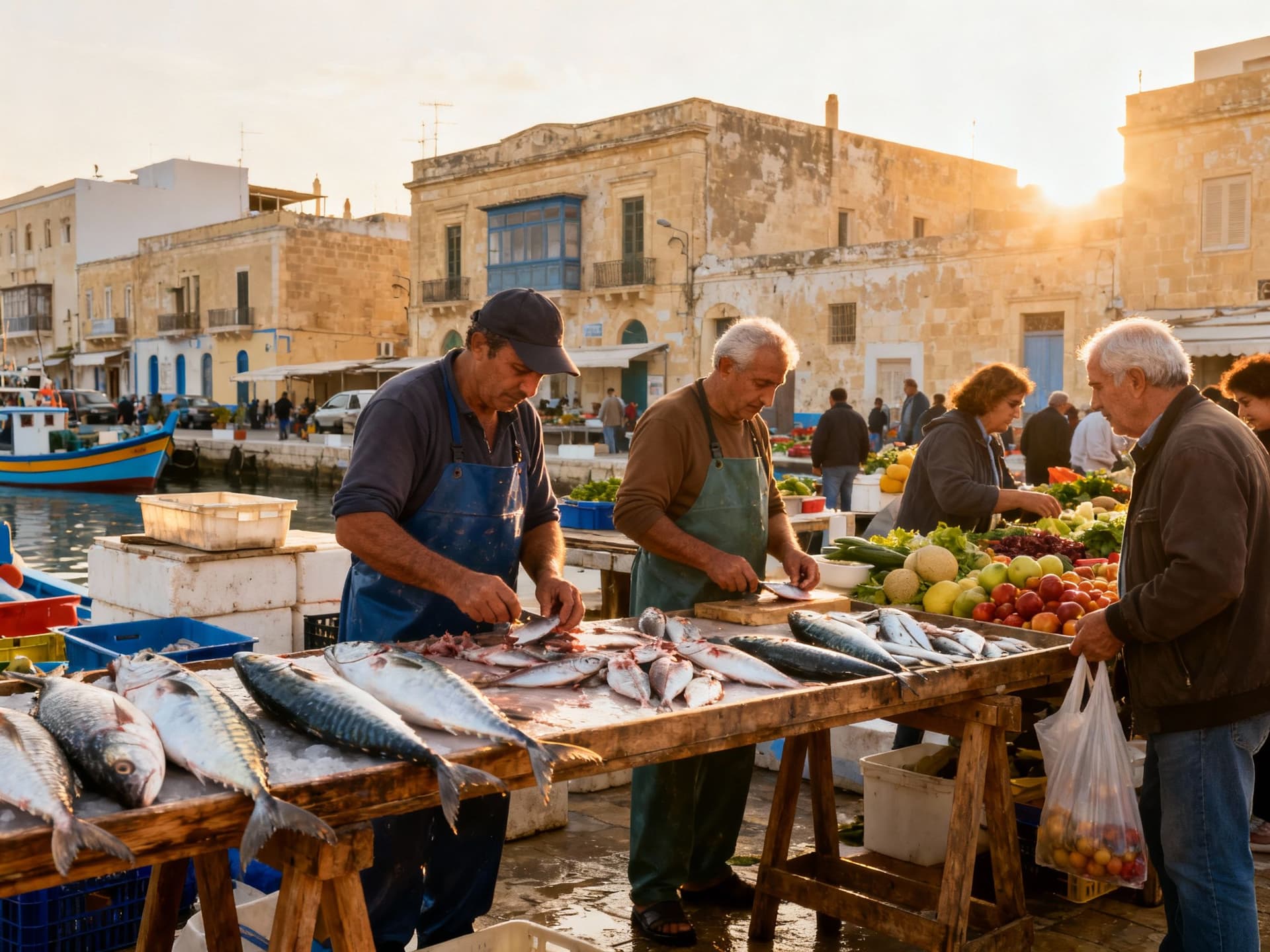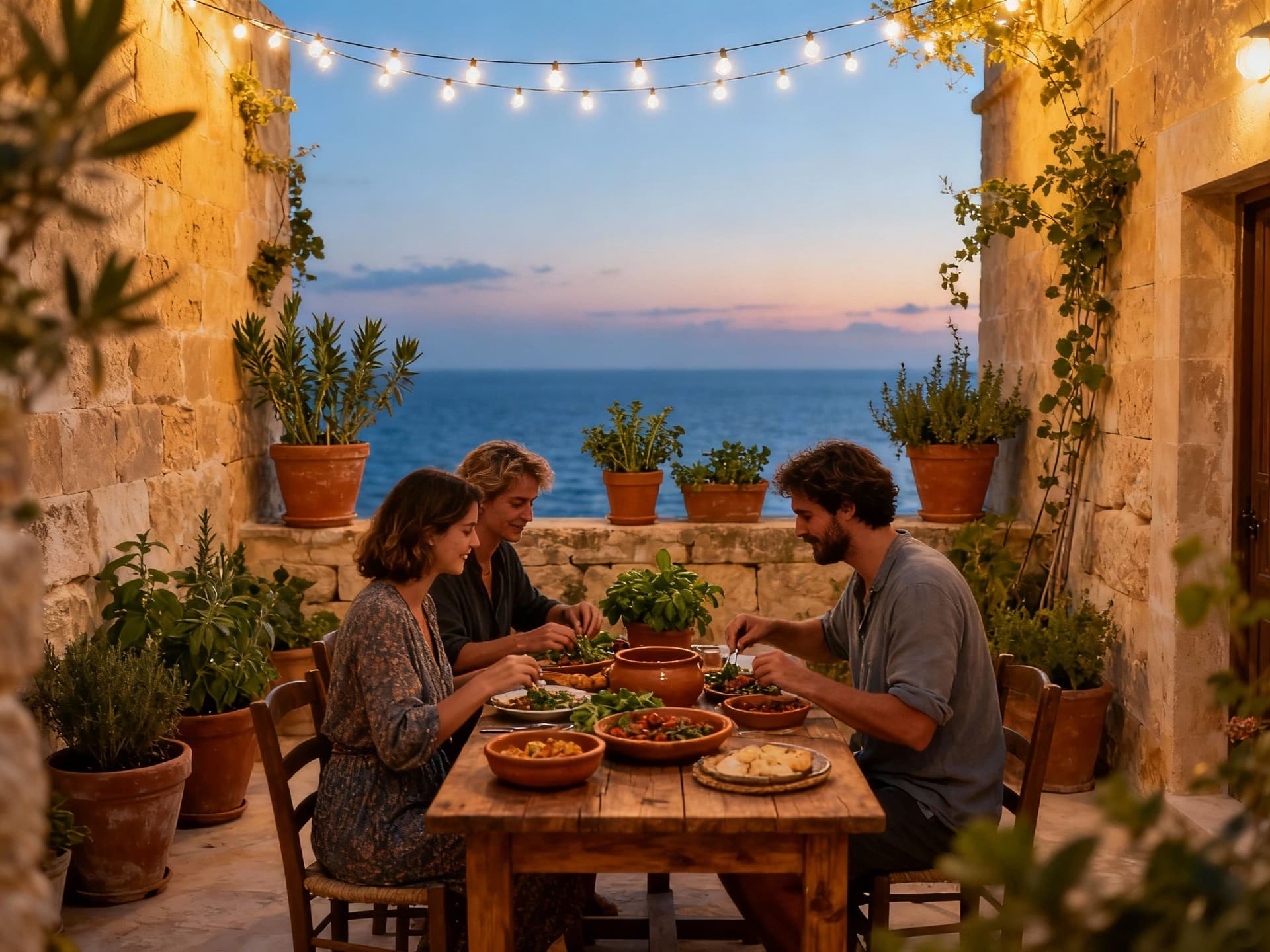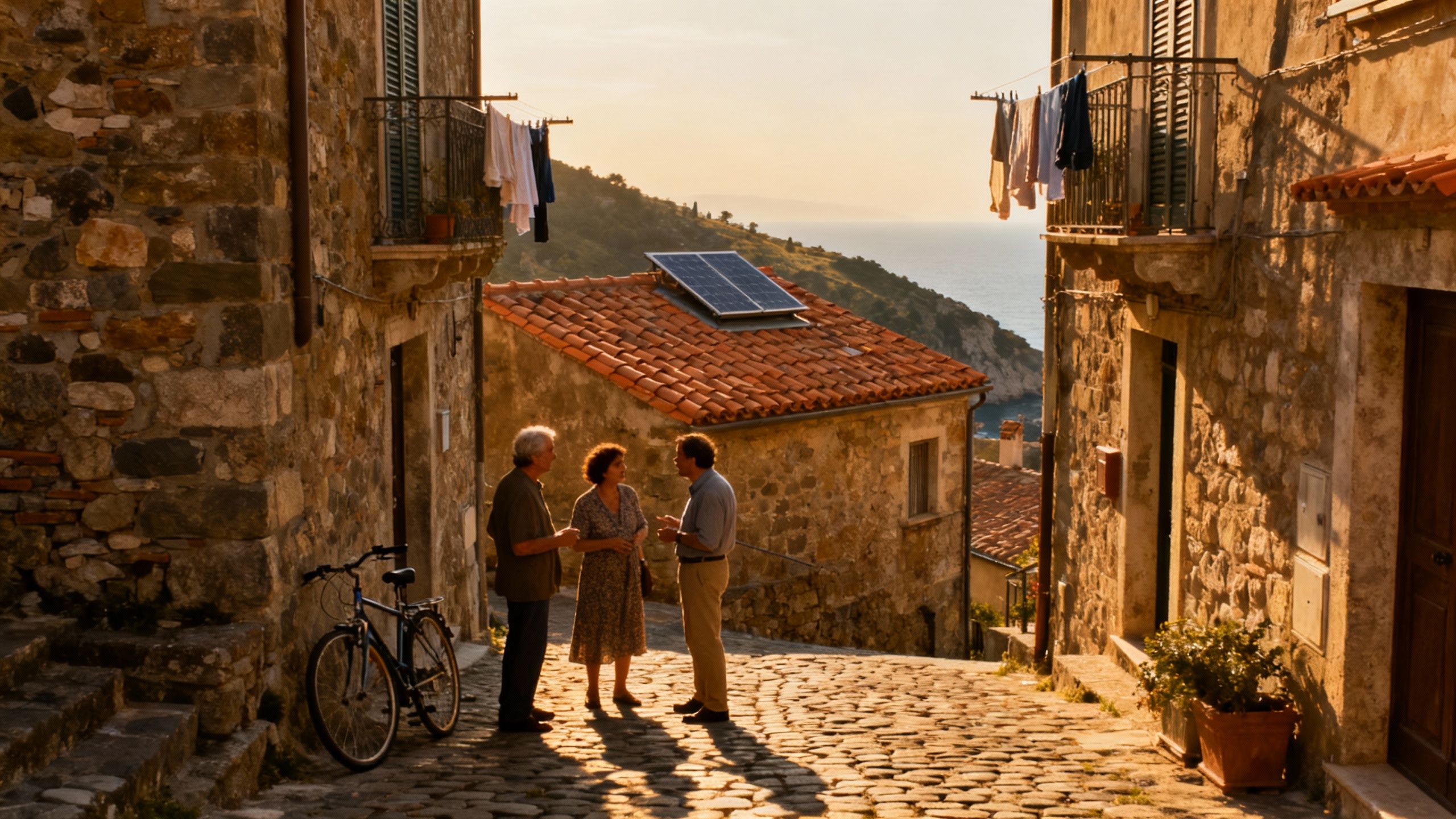Malta: Where Green Value Hides Beyond the Harbour
Malta’s charm masks a busy market and policy shifts; seek quieter villages and Gozo for green living, prioritise sustainable features and local expertise.
Imagine waking before dawn to the call of the sea, walking from a limestone terraced maisonette into a harbourside café in Sliema, and watching fishermen mend nets while the city stretches awake. In Malta that small, daily theatre — terraces, narrow streets, and sudden sea views — is part of ordinary life. Yet beneath the postcard calm a vigorous market and shifting policy realities shape where you should look, and when.
Living Malta: sunlight, limestone and a slow Mediterranean pulse

Malta feels compact in the best way — a short drive takes you from Baroque Valletta’s honeyed stone and quiet palazzos to windswept cliffs and hidden bays in the south. Days are organized around cafés and piazzas: espresso at Caffe Cordina in Valletta, a late lunch in Marsaxlokk after the Sunday market, an evening aperitivo overlooking St Paul's Bay. There’s always the smell of oven-baked ftira (Maltese flatbread) and the wash of Mediterranean light on limestone facades.
Neighborhood rhythms: Sliema, St Julian’s, Valletta and Gozo
Sliema and St Julian’s hum with seaside promenades, trendy coffee bars and an international apartment market — they’re lively, walkable and perfect for buyers who want urban seaside life. Valletta is quieter by night but rich with cultural weight and restored townhouses. Cross to Gozo and the pace slows: stone farmhouses, larger gardens, natural pools and a community that prizes self-reliance and green living.
Food, markets and small rituals
Weekends are market days: the bright fish market at Marsaxlokk, farmers selling sun-ripened tomatoes, and hole-in-wall kitchens serving lampuki pie. The island’s tiny size means fresh produce and strong seasonal rhythms — spring herbs, summer-sweet figs, autumn citrus — and the best properties are those that let you live with those cycles (terraces, small vegetable plots, ample shutters for summer heat).
- Lifestyle highlights to taste and map (places locals love)
- Espresso mornings at Caffe Cordina, Valletta
- Fish and the Sunday market in Marsaxlokk
- Sunset walks on the Sliema promenade and dive spots off the St Julian’s coast
Making the move: pragmatic steps that keep the lifestyle intact

The dream of a Maltese life — sea light, neighbourhood cafés, a small garden — meets an active market. Prices have climbed steadily (the NSO’s RPPI rose notably through 2024–2025), so smart timing, local expertise and an eye for sustainable features are essential if you want value and the life you imagine.
Property types that suit rural and coastal green living
If you prize garden space, look beyond the northern harbour: traditional farmhouses on Gozo and terraced houses near Marsaxlokk often come with courtyards and mature plantings. If you want a compact low‑maintenance life, renovated Valletta townhouses and Sliema apartments with rooftop terraces deliver community life and outdoor rooms. Seek homes with thick limestone walls, shutters and passive cooling — local vernacular that already embodies sustainable principles.
Work with agencies that understand place and stewardship
A local agent who knows where the almond trees still shade a courtyard, who can read energy performance certificates and who keeps a list of craftsmen for lime plaster repairs will save you time and money. Look for agencies that specialise in restored limestone homes, sustainable retrofits and properties with solar-ready roofs — they bridge lifestyle vision and practical care.
- Steps to marry lifestyle with a sound purchase
- 1. Prioritise neighbourhoods by daily rituals (cafés, markets, sea access) rather than only resale value.
- 2. Ask sellers about roof orientation, battery or solar pre‑wiring, and water harvesting potential — small eco features change living comfort.
- 3. Verify foreign‑buyer rules early: EU citizens face fewer restrictions; third‑country nationals generally need AIP permits and minimum price thresholds apply.
Insider knowledge: what expats wish they'd known (and what to watch for)
Expats often arrive enchanted — and then surprised by two realities: the intensity of demand in harbour towns, and how policy shifts can ripple through the market. In 2024 Malta recorded roughly €3.5 billion in residential transactions, showing durable interest from locals and internationals. That popularity means competition for well‑situated homes, but also opportunity in quieter villages and Gozo for buyers who prioritise green living over immediate capital gain.
Cultural quirks that shape daily life (and where you buy)
English is widely used, but Maltese rhythms matter: shops close mid‑afternoon for quiet hours, festas transform streets into nightly gatherings in summer, and neighbours expect hands-on stewardship of shared courtyards. Choosing a property means understanding neighbourly customs — a restored townhouse can come with communal expectations about façade repairs and shared water use.
A practical red flag: policy changes matter. Recent rulings on Malta’s residence/citizenship programmes have altered investor sentiment and administrative pathways. Don’t buy assuming long‑term residency programmes will stay unchanged; instead, work with legal counsel to secure rights that don’t rely purely on one‑off schemes.
- Expats’ top missed checks (what to inspect)
- Water pressure and plumbing condition in older stone houses
- Roof condition and potential for solar panels or rooftop terraces
- Street access and parking realities — narrow lanes can mean logistics for deliveries
- 1. Commission an energy and fabric survey focused on passive cooling, insulation and roof integrity.
- 2. Secure written confirmation of any planning permissions for terraces, pools or rehabilitations.
- 3. Build a local team: agent, lawyer, architect skilled in limestone and traditional methods, and a property manager experienced with seasonal rentals if you need income.
Where value hides: the contrarian idea many buyers miss is that Malta’s greenest, most sustainable options often live off the beaten track. While Sliema and St Julian’s command high per‑square‑metre prices, villages in the south and properties in Gozo frequently offer land, gardens and lower density — features that support regenerative gardening, cisterns and passive design, which are priceless for long‑term eco living.
Conclusion: the life you buy, and the practical next steps
If you crave mornings by the sea, neighbourhood festas and a garden that feeds you, Malta delivers — but the best way to secure that life is practical, patient and local. Start by listing the daily rituals you won’t compromise, then partner with an agent who knows the islands’ quieter corners and the craftsmen who can turn limestone into a low‑energy home. Small eco investments — shading, cisterns, solar-ready roofs — pay back in comfort and resilience.
Ready next steps: visit neighbourhoods in different seasons, request RPPI trends for target areas, and ask an agent for properties with established green features. Let the island’s light and local rhythms guide your choice — and keep stewardship at the centre of the decision.
British expat who traded Manchester for Mallorca in 2017. Specializes in guiding UK buyers to luxury Spanish estates with clear navigation of visas and tax.


